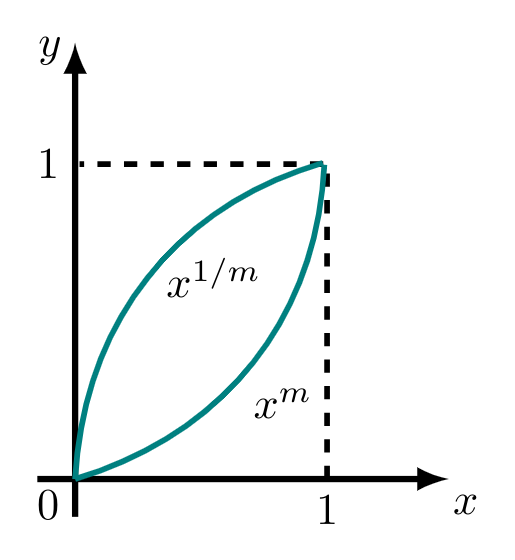Given that $y_1 = x^{m}\;;\; 0\leq x \leq 1,\; m>1$
For simplicity we can take $m = 2,$ differentiate the function and get the slope.
For $y = x^{2}$ we get $m_1 = \frac{\mathrm{d} y }{\mathrm{d} x} = 2x.$
Similarly for $y_2 = x^{1/2}$ we get $m_2 = \frac{\mathrm{d} y }{\mathrm{d} x} = \frac{1}{2\sqrt x}$
At $x = 0, m_1 = 0, m_2 = \infty$
At $x = 1, m_1 = 2, m_2 = 0.5$
Only for option, A slope of $y_1$ is increasing and slope of $y_2$ is decreasing.

So, the correct answer is $(A).$